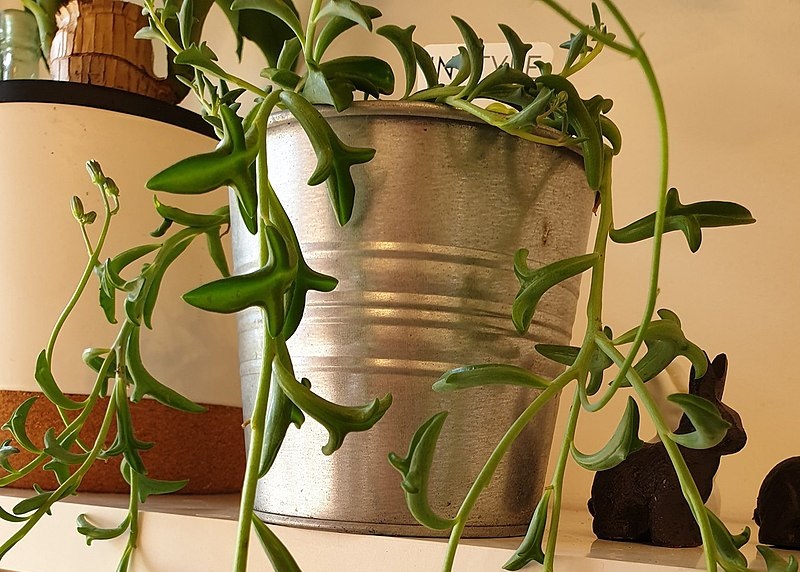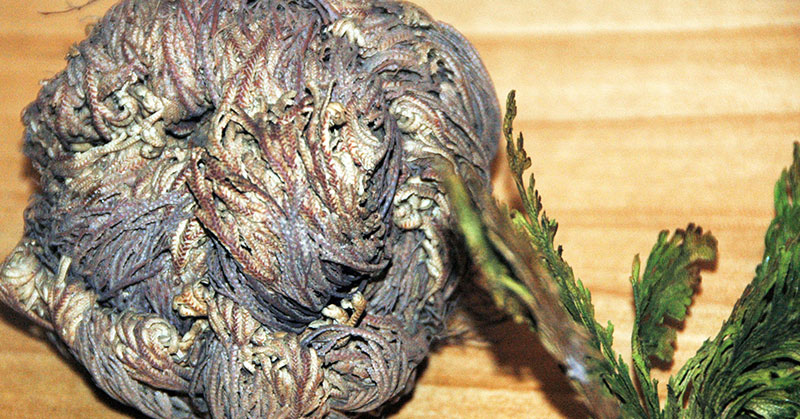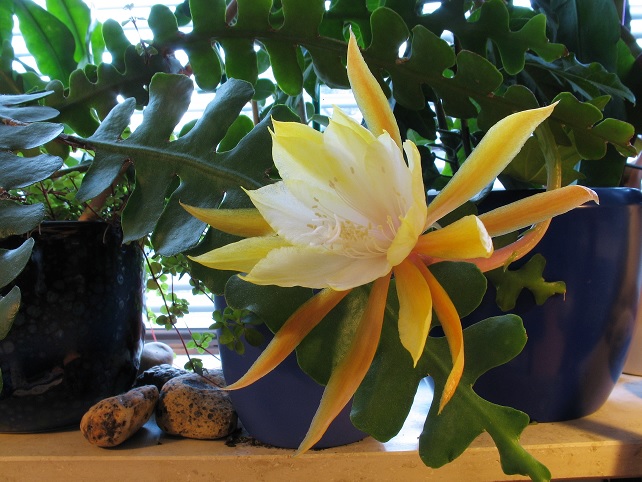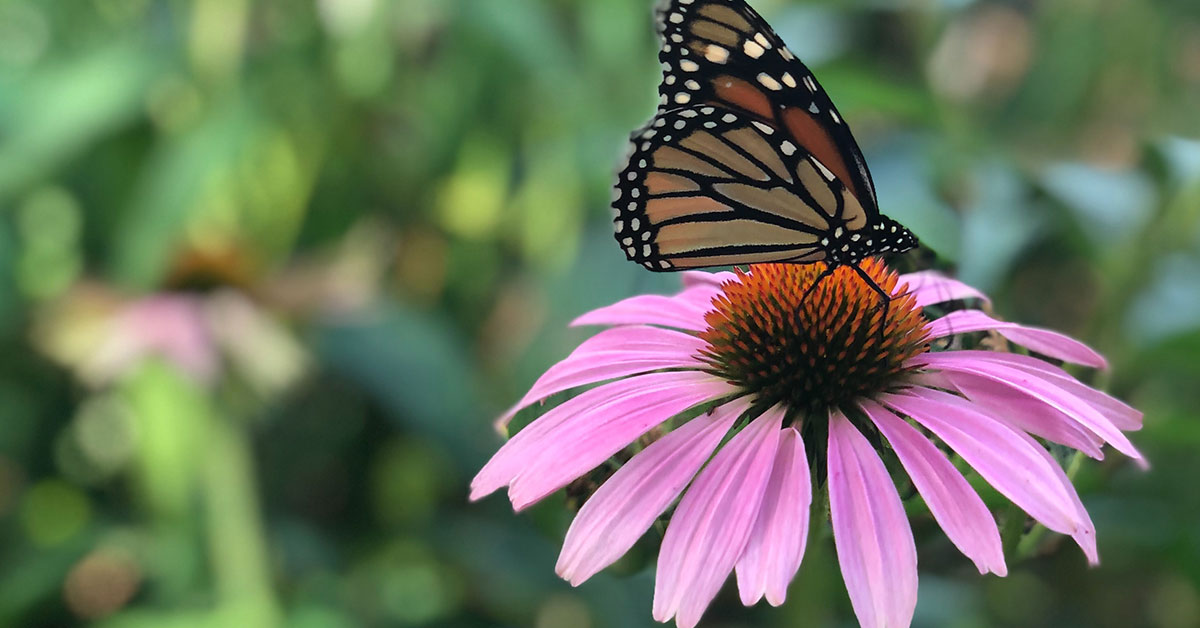After a long day of working on my garden in the hot summer sun and enjoying all the different plants I’m growing, my favorite thing to do is come back inside and enjoy all of the plants I have in my house too! I guess you could say I really like plants. Over the years I’ve collected a number of really neat rare houseplants.
Succulents make for some of the coolest plants. Their growth patterns are so different. As a a result, the majority of the plants on my rare houseplants list are succulents or cacti. Let’s dive in.
The following is a list of some of my favorite quirky, unique, and rare houseplants. Many of them are succulents and easy to care for, making them ideal for someone with a ‘brown thumb’ who wants to spice up the inside of their home.
Read More: Opal Succulent Plants Look Like A Beautiful Gem Stone
Living Stones (Lithops spp)

Living stones are first on my list of rare houseplants because they are arguably one of my favorite houseplants. They’re a type of succulent plant, meaning they can be neglected to some degree with little negative consequence. True to their name, living stones are a stone-like appearance, often growing two thick, succulent leaves, giving it an almost brain-like look.
These plants tend to stay fairly short, growing from a half inch to two inches tall. They like full sunlight, well-drained soil, and occasional watering. A beautiful white, yellow, or orange flower will emerge from the part between the two leaves during the fall. Following that, they will remain dormant overwinter.
Trachyandra Tortilis

This succulent is so uncommon that I have never been able to find a non-scientific name for it. Trachyandra tortilis is a succulent that grows winding, curly, tail-like leaves from a primary stem. They can get up to 10 inches tall and can live a very long time. When it flowers, the plant will take on a pink-ish hue.
Trachyandra trotilis grows well in bright light, not necessarily direct sunlight, making it ideal for indoor growth. It likes sandy, well-drawining soil and occasional watering.
Read More: Bear Paw Succulents Are The Cutest Thing Ever And We Want Them All
Marimo Moss Balls (Aegagropila linnaei)

Marimo moss balls are pretty common among freshwater fish tank enthusiasts, as they help to oxygenate water for aquatic animals like fish, but they are a rare houseplant to most collectors. This is likely due to their subdued appearance and fully aquatic nature. But I think Marimo moss balls are a must-have for any indoor plant enthusiast.
Marimo moss balls are well known for longevity too. A single ball can live for up to 200 years and in some places have been passed down as heirlooms from generation to generation. They require little maintenance, can be grown in standard tap water, and don’t require any special lighting. They like temperatures around 75 degrees Fahrenheit.
Keeping an algae-eater like dwarf shrimp with your moss ball will help reduce algae overgrowth and reduce the frequency of tank cleaning.
Read More: How To Start A Moss Garden In 5 Steps
Black Prince Succulent (Echeveria)

The Black Prince Succulent is an excellent addition if the vibe in your home has gotten a little too perky or colorful. This black succulent helps ground your collection of houseplants with its dark, black appearance.
This rare houseplant requires very little care and infrequent waterings. It’s an easy plant to grow, but may want more water in spring and summer. It grows well in sandy, well-drained soil and a nice, sunny window.
Echeveria produces flowers on tall, arching stalks in the summer and early fall.
Dolphin Succulents (Senecio peregrinus)

Dolphin succulents are a relatively new type of succulent named for its dolphin-like leaves. The succulent was produced by cross-pollinating a String of Pearls succulent and a Hot Dog cactus. The result was a succulent that looks a bit like a dolphin!
These succulents, like many on this list, appreciate bright light, well drained soil, and occasional watering. They’re a great starter plant for the rare houseplant enthusiast due to how easy they are to grow.
Read More: These Mermaid Tail Succulents Bring The The Sea To Your Home
Resurrection Plant (Anastatica hierochuntica)

The Resurrection Plant, sometimes called the Rose of Jericho, is a poikilohydric desert plant capable of taking an incredible amount of abuse and surviving. In the wild, these plants will drink any available water until there is no more, at which point they curl into a dry ball and can be blown to the next watering hole.
Because of this unique strategy, they don’t need soil but do like plenty of bright light. If you forget to water them for a long time, they’ll simply curl up. When you decide to water it again, its leaves will unfurl.
Read More: How To Grow Resurrection Plants
Sweetheart Plant (Hoya kerrii)

The Sweetheart Plant bears a resemblance to a hanging jade plant, with thick, succulent leaves growing along a hanging, vine-like stem. This rare houseplant is a favorite among lovers as a gift for Valentine’s Day, as the plant’s leaves take on the shape of a heart.
The sweetheart plant is a slow grower, but given time, it will create a beautiful hanging plant for your home. Like most succulents on this list, it appreciates bright light, well-drained soil, and scarce watering. The plant does produce flowers similar to a jade.
Fishbone Cactus (Epiphyllum anguliger)

The Fishbone Cactus is another rare houseplant that does well in a hanging basket. It grows long, slim leaves that take on the appearance of the spine and ribcage of a fish, thus the name. These cacti are super easy to care for.
They’re a great indoor plant, requiring only bright light (no need for direct sunlight) and infrequent waterings. Like a Christmas cactus, a little neglect can go a long way. Don’t be too eager to overwater it. The plant will benefit from occasional misting to increase humidity.
Read More: 12 Pink Succulents You Need in Your Home This Summer
Rose Succulent (Greenovia aeonium)

I like roses, the flower at least. The rest of the plant leaves a lot to be desired. Long stems, small leaves, thorns, I think I’ll pass. The rose succulent is a great compromise for gardeners who like roses but don’t really want to deal with roses.
This rare houseplant has a distinct rose-like appearance and can even come in pink, matching the hue of some rose flowers. The plant does well with bright, indirect light, well draining sandy soil, and occasional watering.
Basketball Plant (Euphorbia obesa)

The Basketball Plant, sometimes called the Baseball Plant, is a quirky looking plant that resembles the Peyote cactus in some respects. I love the way Peyote looks, but due to its classification as a controlled substance is not legal for me to grow. Euphorbia obesa is a good compromise.
This cactus, which generally has no spines, grows to look like a fat, ball-like sphere and produces small flowers at the top. It’s incredibly simple to grow. It’s easy to please, requiring only warm air, a little water, a little light, and well draining soil.
Keep Reading: Jellyfish Succulents Will Turn Your Garden Into An Otherworldly Aquarium













